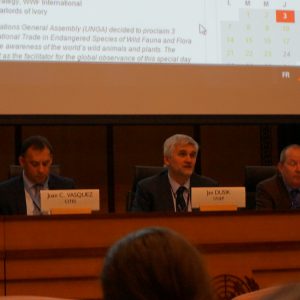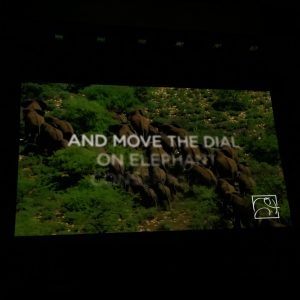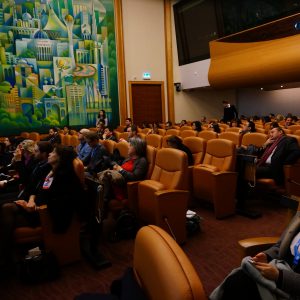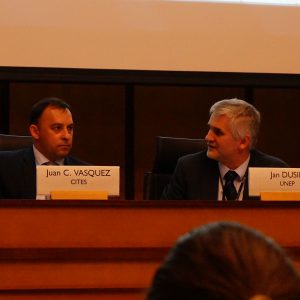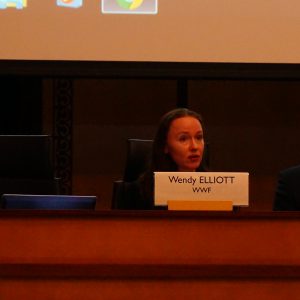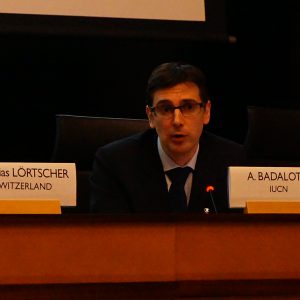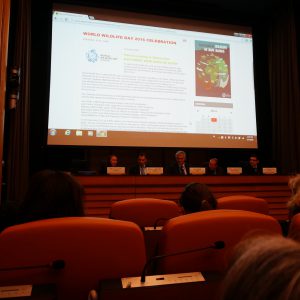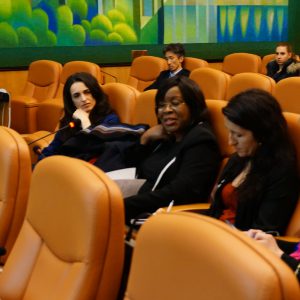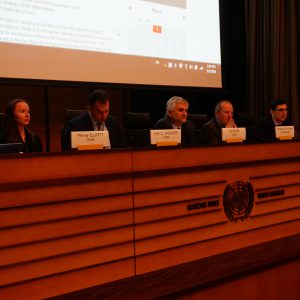Event
World Wildlife Day 2016 Celebration | Film Screening & Discussion EXPLORER: WARLORDS OF IVORY
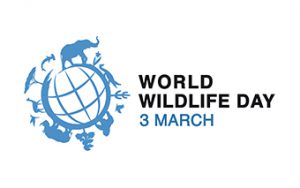
03 Mar 2016
12:15–14:00
Venue: Palais des Nations, Room XIV (Cinema)
Organization: Geneva Environment Network
To mark World Wildlife Day 2016 a film screening and discussion organized within the framework of the Geneva Environment Network took place at the Palais des Nations, on Thursday 3 March 2016, at the Palais des Nations, Room XIV (Cinema).
Film Screening & Discussion
World Wildlife Day is celebrated this year under the theme “The future of wildlife is in our hands.” African and Asian elephants will be a main focus of the Day under the theme “The future of elephants is in our hands”. The film to be screened, “Explorer: Warlords of Ivory”, presents investigative journalist Bryan Christy setting out on a groundbreaking mission to expose how the ivory trade funds some of Africa’s most notorious militias groups. Working with one of the world’s top taxidermists, he conceals a sophisticated GPS tracker inside an incredibly realistic faux ivory tusk and drops it in the heart of ivory poaching country and monitors its movements to track down the kingpins of the ivory trade.
About World Wildlife Day
On 20 December 2013, at its 68th session, the United Nations General Assembly (UNGA) decided to proclaim 3 March, the day of signature of the Convention on International Trade in Endangered Species of Wild Fauna and Flora (CITES), as UN World Wildlife Day to celebrate and raise awareness of the world’s wild animals and plants. The UNGA resolution also designated the CITES Secretariat as the facilitator for the global observance of this special day for wildlife on the UN calendar.
Follow #WorldWildlifeDay, @WildlifeDay, @CITES & http://www.wildlifeday.org/ for updates on 2016 edition.
Discussion
The screening was followed by a short panel discussion on the challenges faced by the world’s wildlife and the ongoing fight against illicit trafficking in wildlife, including:
Jan DUSIK, UNEP Regional Representative (Welcome & moderation)
Juan Carlos VASQUEZ, Chief, Legal Affairs & Compliance, CITES Secretariat
Mathias LÖRTSCHER, Head, CITES Management Authority, Switzerland
Alessandro BADALOTTI, SOS-Save Our Species Coordinator, Global Species Programme, IUCN
Wendy ELLIOTT, Lead, Global Species Conservation strategy, WWF International
Jan DUSIK
Jan DUSIK started the celebration by mentioning UNEP Executive Director message for World Wildlife Day, stressing that poaching and the illegal trade in wildlife have reached unprecedented levels. From 2010 to 2012 alone, over 100,000 elephants were poached in Africa. Some rhino populations face extinction. As few as 3,200 tigers exist in the wild today. The disappearance of individual species threatens biodiversity, and by extension, the life support systems on our planet. Our responsibility is to look after wildlife. World Wildlife Day is a call to become more informed and more involved in stopping this crime against nature, communities and future generations.
Mathias LÖRTSCHER (Head, CITES Management Authority, Switzerland)
Switzerland, and Europe have a different situation and scale of illegal trade from that of Africa, but also serves a a transit country when it comes to illegal wildlife trade. So in Switzerland, they try to develop guidelines to catch illegal traders, cooperate with other countries to prevent playing a role of transit country, make use of different technologies including DNA analysis.
Juan Carlos VASQUEZ (Chief, Legal Affairs & Compliance, CITES Secretariat)
Presented recent trends in wildlife trade. The scale has changed due to many sanctions, and measures but some species are in an extremely serious situation. This year, 2016, is important since there are lots of important events regarding biodiversity including Conference of Parties of CITES and CBD (Convention on Biological Diversity), and the IUCN Congress.
However, there are also some good examples. In case of Vicuña (one of wild South American camelids), they were almost extinct but now their population is about half million. Crocodile population was also recovered over many years. Rhino population was almost extinct in 1970-1980 and then increased since 2008. However, now their population seems to decrease again so we have to keep an eye on this issue.
Wendy ELLIOTT (Lead, Global Species Conservation strategy, WWF International)
Wendy explained what is the impact of loss of wildlife in terms of biodiversity. The loss of certain species can have a negative impact on other species. For example, if we lose certain animal species, then some plant species that relied on seed dispersalby animal species might have a serious problem as well. In this way, the whole forest may be destroyed. In the sense that it can also cause the decrease of the forest’s carbon capturing capacity, it has a global impact on climate change as well.
Wendy explained how we can make local community involved in taking action.
She said that revenue should be shared with local people so that they have ownership for the wildlife and also incentive to protect the wildlife. The good example is the case of Namibia, where whole rights over wildlife belongs to the local community and is the biggest defender of wildlife.
Alessandro BADALOTTI (SOS-Save Our Species Coordinator, Global Species Programme, IUCN)
Alessandro explained how demand reduction can benefit local communities. Demand reduction not only serves to decrease the amount of illegal trade in the market, but also enables local community to benefit from the existence of certain species. For example, manta rays are important source of income in 10 countries. Their existence attracts tourists to snorkeling or diving and generate income for the local community.
Q. To what extent can high-level, political measures (such as UNGA resolutions/ SDG agenda..) can dedicate to actually help fixing this problem?
Mathias LÖRTSCHER
The role of those high-level, political measures is to recognize that this is a problem and keep up the pressure to support this recognition can be led to an actual action.
Q. What can individual people do to tackle this problem?
Wendy ELLIOTT
Individuals can try not to buy illegal wildlife product. If the product is doubtful, then do not buy it. Consumer choice has an enormous potential to protect wildlife.
Also, civil society and governments should treat the rangers who protect wildlife from poaching with the same respect, the same employee conditions. According to a survey, a lot of rangers were in a hard situation; they did not get a proper equipment nor training.
Q. Are there other recipient countries that demand for illegal traded wildlife exist? (other than China)/ and also is it only problem of Africa?
Wendy ELLIOTT
China is doing a lot of enforcement and lots of countries in Africa are collaborating with China to fix the problem of wildlife trafficking. Thailand is also a major recipient country and there was a campaign to remove a certain common character from their name in terms of elephant demand reduction. Vietnam is also a major customer for rhino horn.
Since demand reduction takes a long time to have an actual impact, the scale of demand reduction should go up and also we cannot solely rely on demand reduction but the efforts from African governments or other ‘producer’ countries should be accompanied.
Asia is not only a recipient region, but also there are poaching problem of rhinos and elephants like in Africa. However, there are success stories as well like the case of ‘Greater One-Horned Rhino’ , in which poaching has decreased drastically for last few years.
Juan Carlos VASQUEZ
There are other major countries like Philippines where demand for ivory exists and they have their strategy respectively. Also there are ivories from various sources other than elephants with various uses. Other than ivory, illegal timber is one of the major issues, European Union is also a big consumer of caviar, wildlife ingredient for lipsticks, etc.
Mathias LÖRTSCHER
We are mainly focusing on illegal, high-profile species trade. However, we should not forget the local people and also consider positive benefit of legal trade. Beside illegal trade, we should consider the way to make legal trade to be performed in a more sustainable way.
Documents
Links
- CITES: www.cites.org
- Swizerland: www.blv.admin.ch/themen/handel_wild/05116/index.html
- IUCN: www.iucn.org
- SOS species: www.sospecies.org
- WWF: www.worldwildlife.org/pages/stop-wildlife-crime

